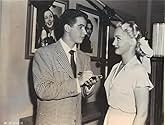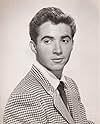Never a fan or follower of comic strips, I was only vaguely aware of "Gasoline Alley" as an entertainment entity growing up, as well as later in life. But having just now an opportunity to see the film, made in 1951, I looked at the IMDb synopsis and decided to give it a whirl. And it was a most pleasant experience and it is very nice to spend time with such a warm and happy extended family. Although inspired by and including characters from the comic strip, the film certainly can stand alone and be appreciated without an awareness of its origin.
"Gasoline Alley" is a loving and in some ways bittersweet retrospection of small town life in America that has largely evaporated, unknown and not even missed by the ever increasing numbers of dwellers in the urban confines of America's twenty largest populated conglomerations. Lucky are those remaining citizens who still live in the comparative idyllic rural enclaves. And lucky it is, too, that documents like this film exist to remind us of what much of America was like in the days of yore.
Director Edward Bernds captains a careful and sweet approach to the program in only his fourth year of making features (including some of the last Blondie movies), having already been at Columbia for years as screenwriter and short subject director (including the Three Stooges). One gets the feeling that the cast and crew enjoyed their time together giving life to this movie and were as happy and cohesive as the family depicted on screen.
The remaining point of interest for me weighs on one of the Alley's characters named Skeezix. This is a pet name my mother occasionally used for me over the years, but I had no idea and never even thought about where it came from. Apparently I know now! It certainly is an odd given name and one assumes it was on the character's birth certificate. But were there any real life people named Skeezix?
Final comment: I then went on to see the second and last film of the series, "Corky of Gasoline Alley," made also in 1951. I did not enjoy that one quite as much as the first one, primarily because the "Corky" film was a little too madcap and urgent, perhaps just a little too much a comic strip come to life. Charm in this followup didn't seem to permeate the fabric of the film like it did in the first. Additionally, the actor Gordon Jones' character in the second film, Mr. Martin, had a difficult personality that was just a little too much on display. But nonetheless, it deserves to be seen if the first one is, to complete the arc. Indeed it is disappointing that more imagined installments did not work out.





























